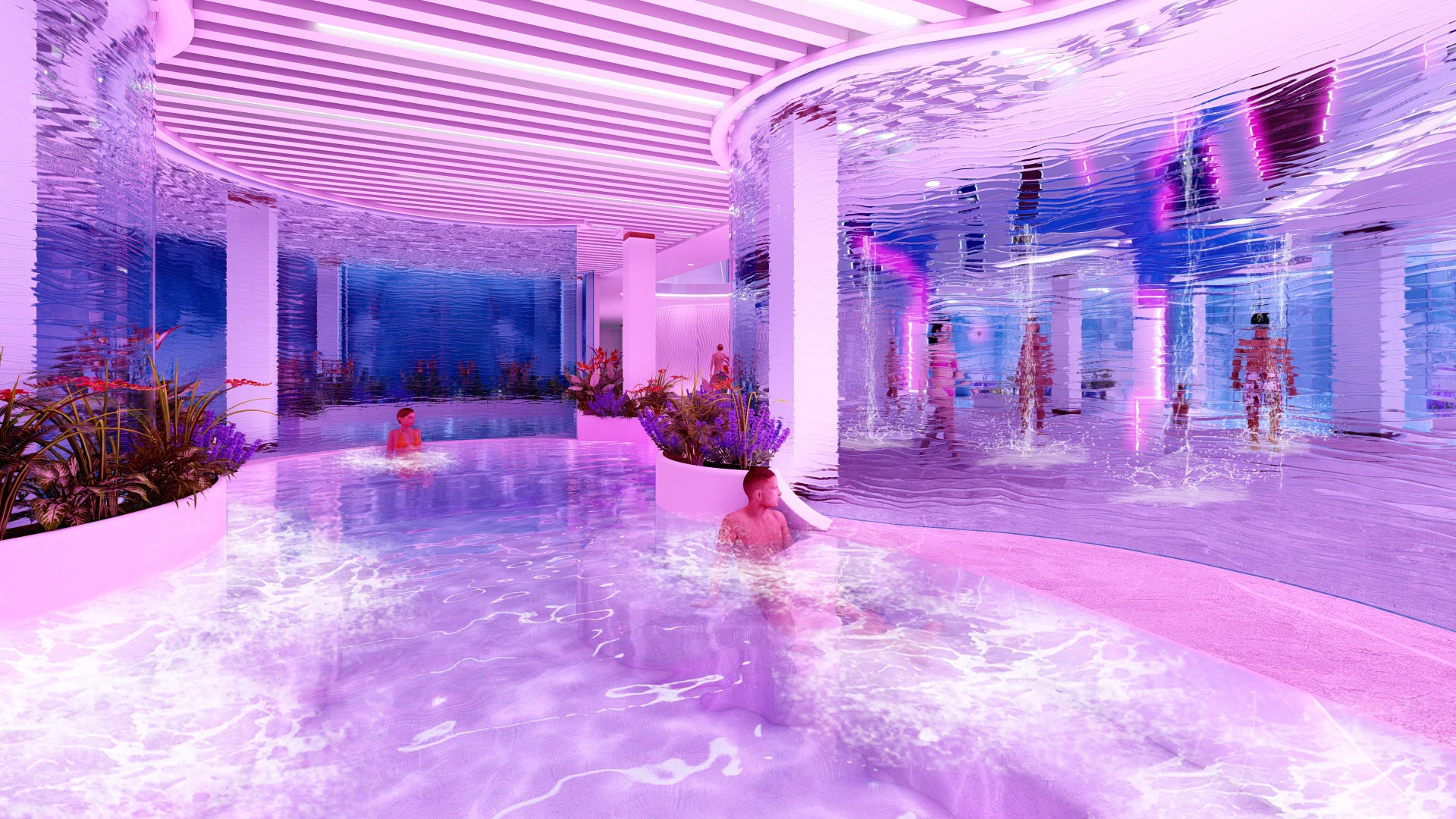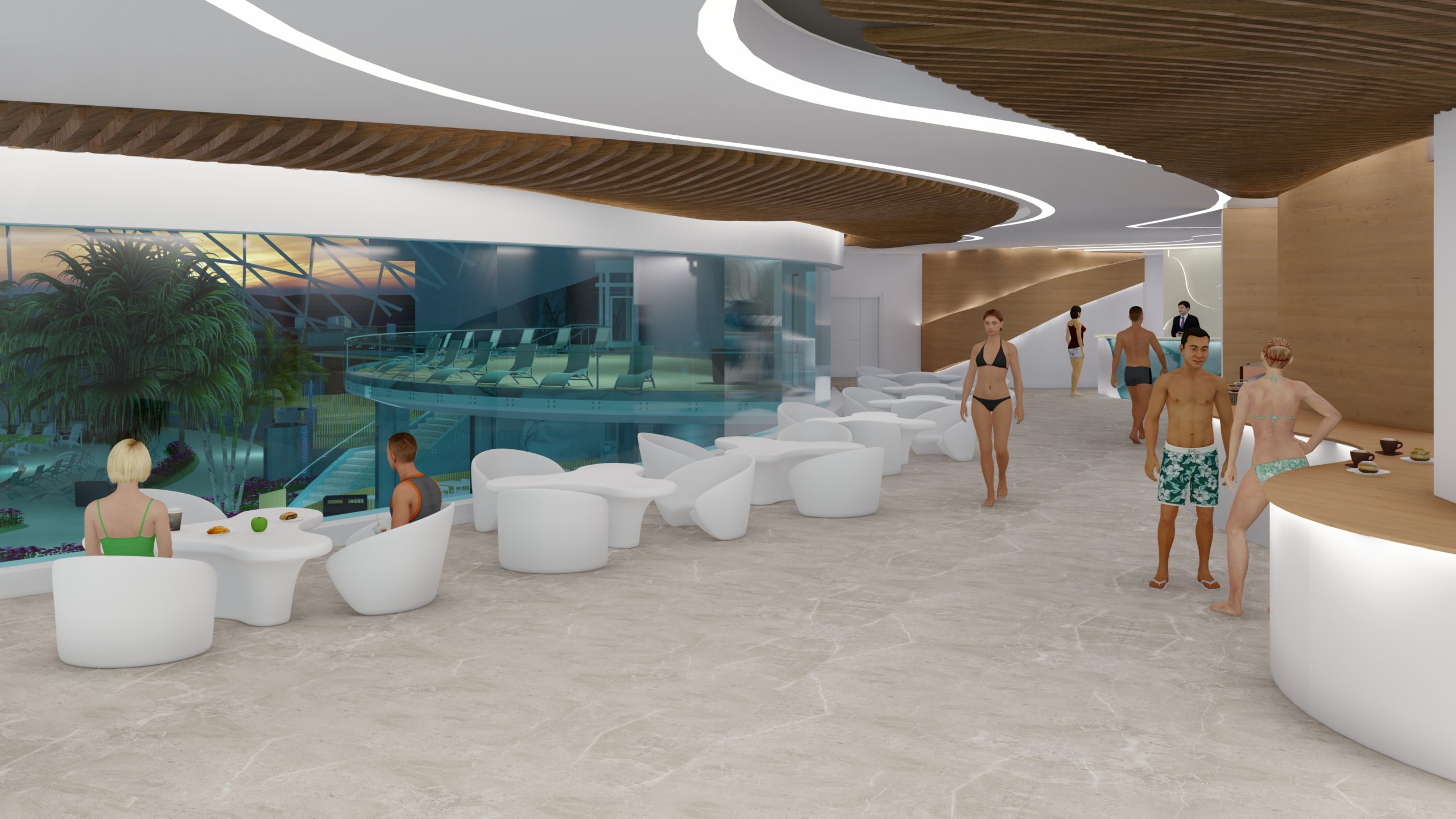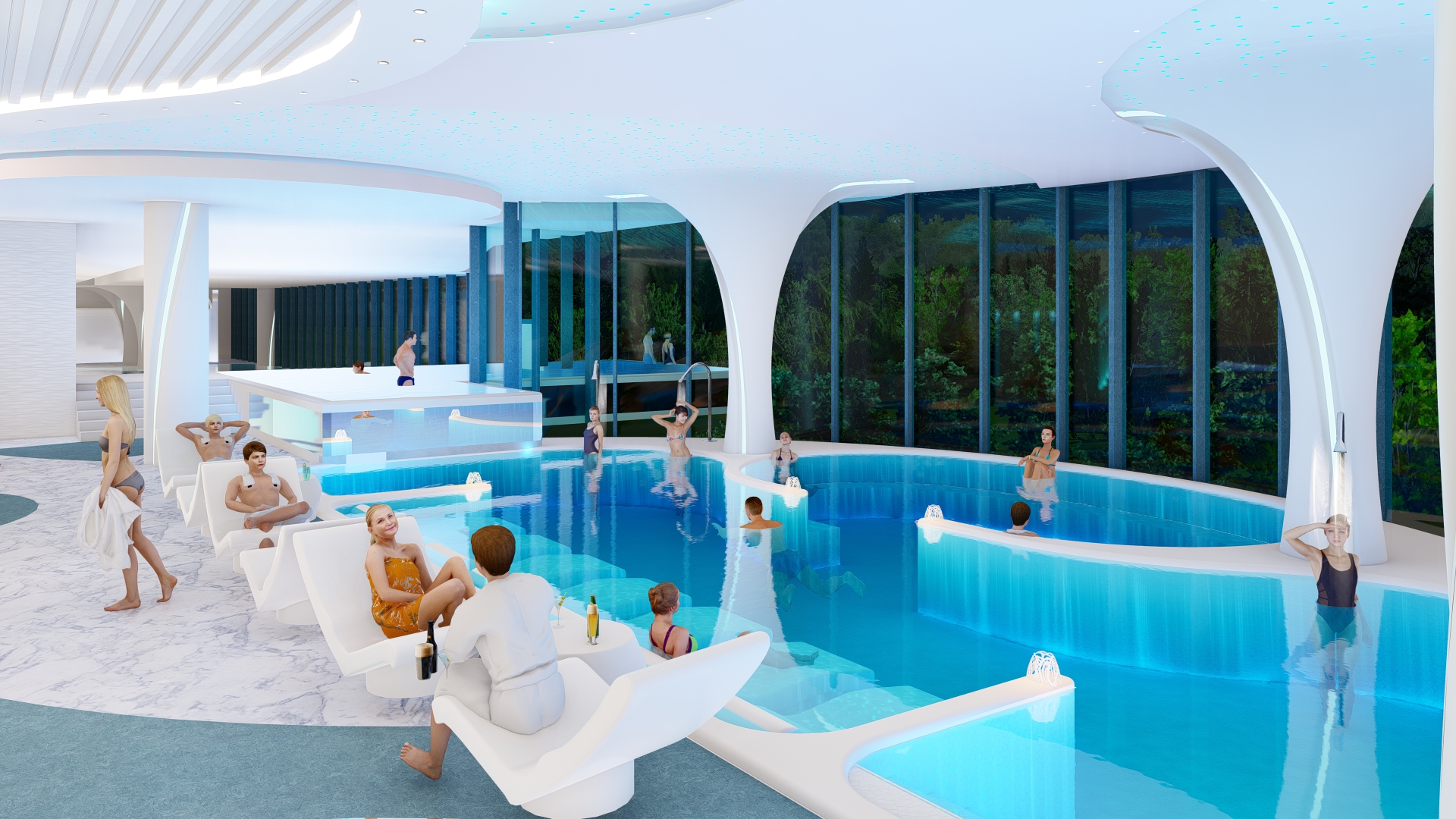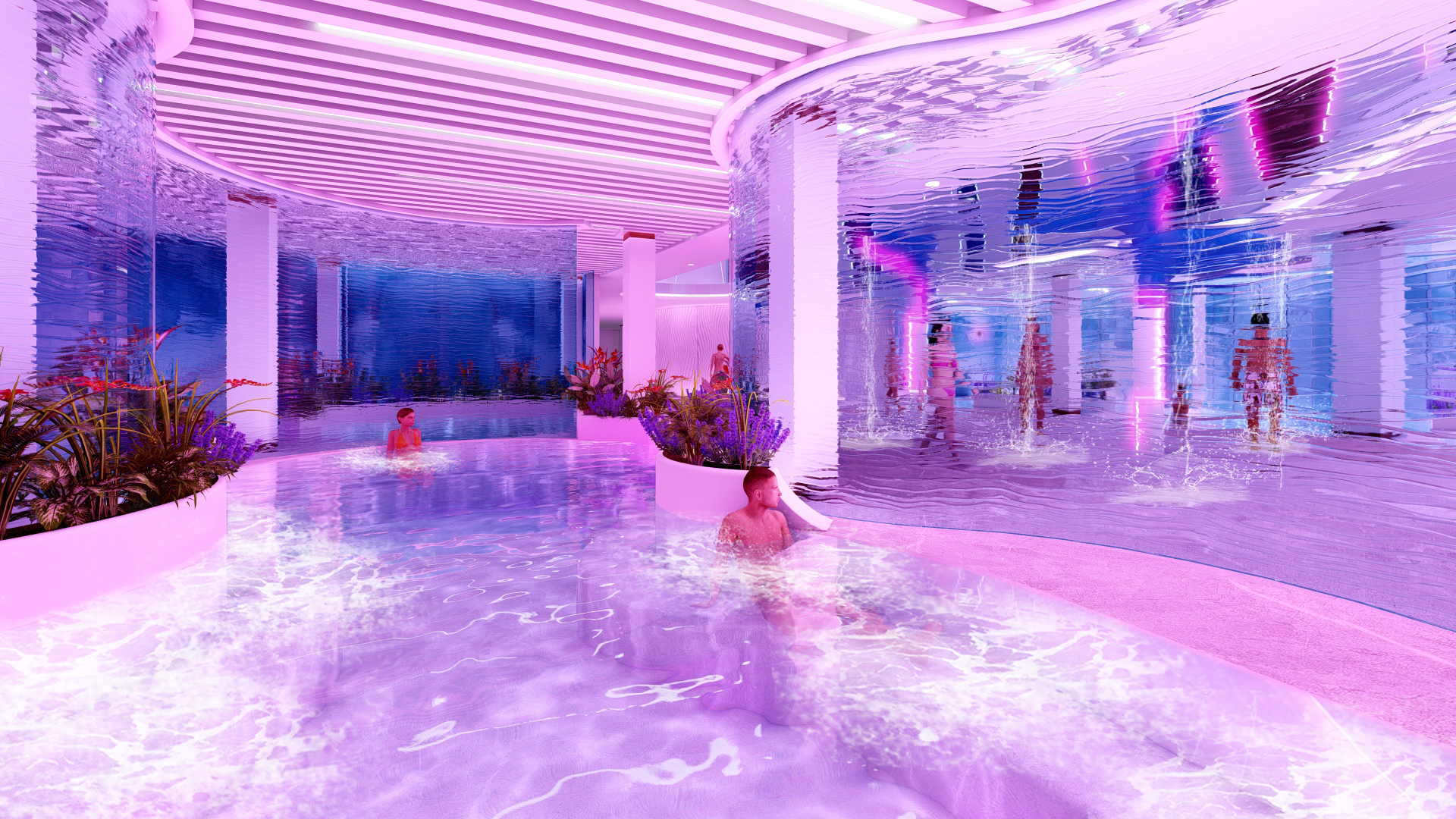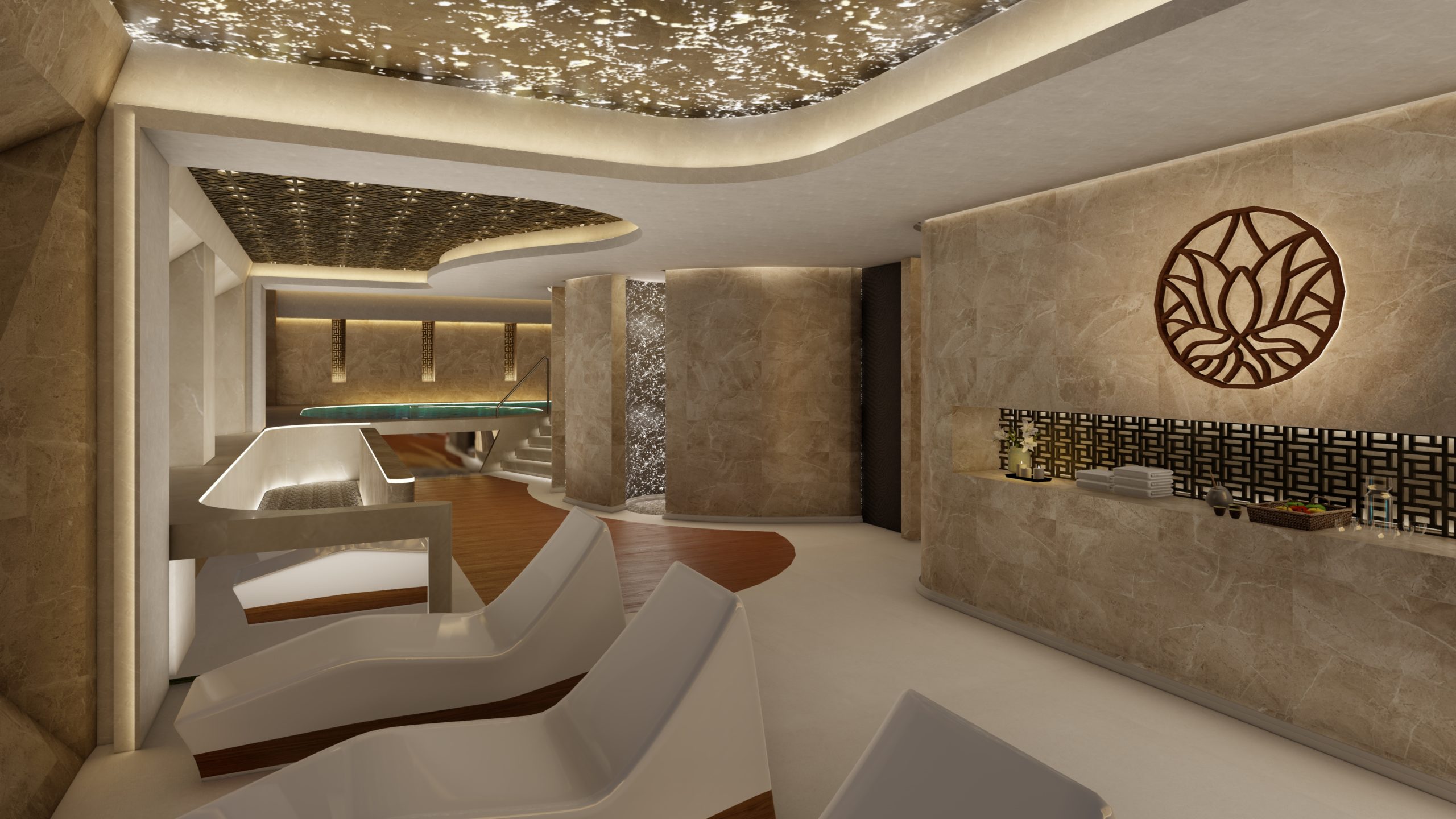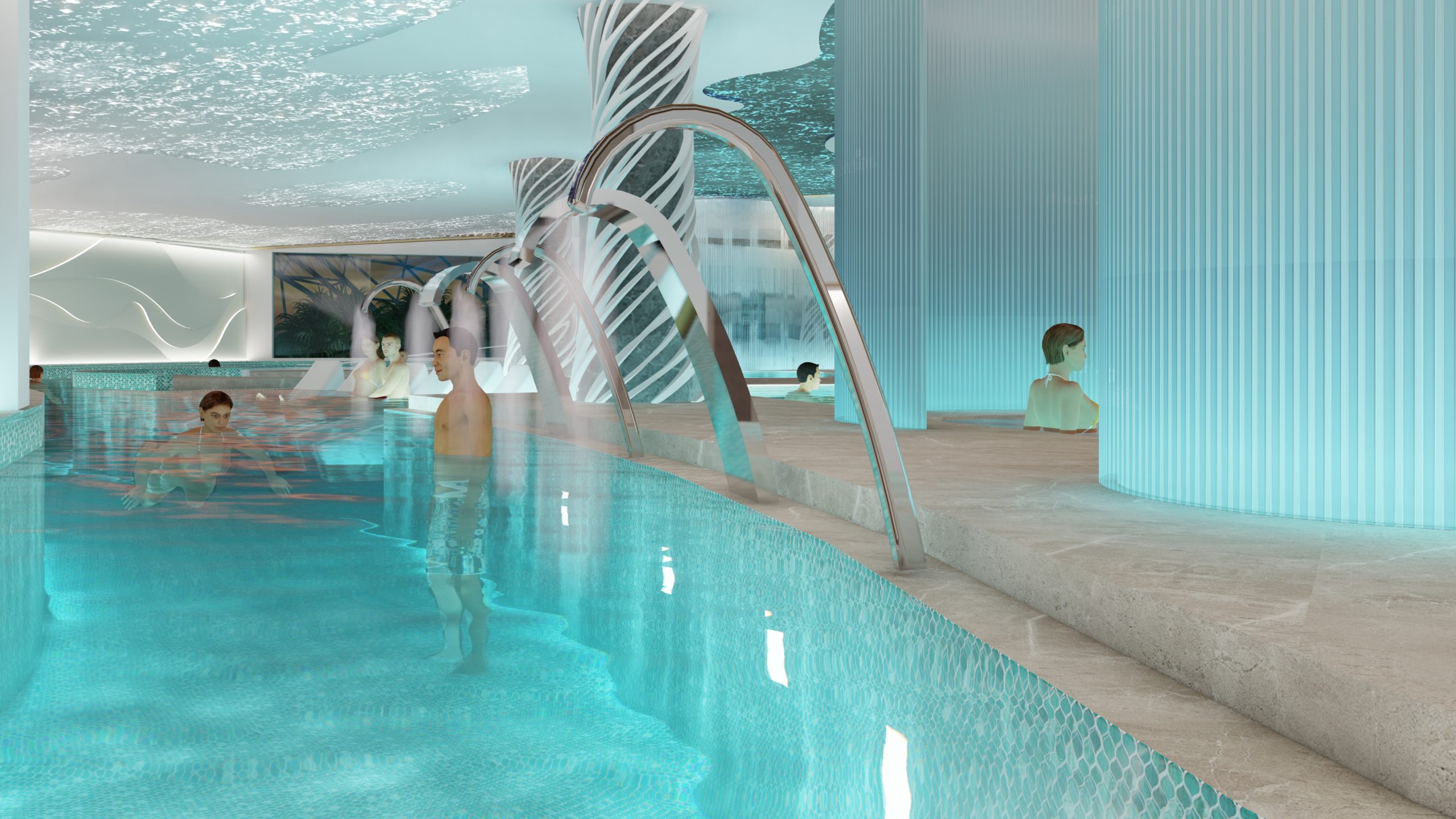Amusement Logic is currently involved in the design, development and construction of several thermal parks around the world. In some cases, associated with large hotels and resorts, in others, as part of the facilities of high-class campsites, in others, amongst the attractions of water parks and, in others, included in the leisure offer of shopping centres. In all of them, our work is always based on the same principles, which have been developed over 25 years of experience.
Harmony and efficiency
Thermal parks are centres for leisure and health and wellness tourism, which bring together a large number of specialised facilities and complex technical equipment for the satisfaction of the family public. They usually include hot and cold water pools, jacuzzis, hydromassage, various types of saunas, relaxation and massage areas, rest and swimming areas… Often, these facilities are complemented with slides, waterfalls, waves, bridges, grottoes, artificial rocks, islands… Or they have children’s areas with interactive games and water jets. In addition to all of the above, thermal parks also have restaurant areas, bars in the water and the necessary changing rooms, lockers, reception…
Well, the principle that governs our work in the design and construction of these thermal parks is that of the harmonious, practical and efficient integration of all their components. This means that we must take into account, first and foremost, visitor comfort and satisfaction of the family public. But also, on the side of the developers and investors, efficiency in their operation.
Family satisfaction and comfort
To meet the first objective, that of ease of transit and the satisfaction of the families who come to the thermal park to enjoy a great day out, we have previously worked out a suitable combination of attractions. Children, teenagers and youngsters, as well as adults, must find their own itinerary of health, wellness and, why not, fun. However, in order to ensure that there are no conflicts and that visitors do not disturb each other along these routes, we have meticulously positioned the attractions within the thermal park and have carefully considered the flow of people in the area. In addition, we consider the provision of rest areas and adequate service facilities in the complex and the necessary visual communication between the children and their parents. At the same time, we foresee clear, visible and perfectly understandable signage.
Confidence in the project and efficiency in its operation
Our second main objective is twofold: efficiency in the operation of the thermal park and consequently, the peace of mind of the developers and investors and their confidence in the project. Firstly, to guarantee the peace of mind and confidence of the developer who makes the thermal park possible, we work closely with them from the early stages of the conceptual design, in continuous rounds of consultations and meetings. It is at that moment when both our Design and Architecture Departments focus their work on the development of a project whose operation allows the maximum use of resources and minimum energy consumption (in addition to the previous objective, which we have already mentioned).
To this end, amongst other things, millimetric calculations of the necessary capacities of the technical equipment are carried out, the most efficient equipment is selected, centralised and rationally located, etc. Finally, once the project design has been determined, we carry out an initial investment estimate for the developer(s) and, subsequently, a market and feasibility study. It is then time for these developers and investors to make informed decisions with complete confidence and peace of mind. These decisions may relate, for example, to the appropriateness of using natural or conditioned water, the need for both night and day operation, whether to establish an indoor or outdoor thermal park, or whether to operate 365 days a year.
Finally, once the appropriate decisions have been made by the developers, Amusement Logic takes care of everything else, from construction, site management and equipment supply and installation, to staff training and commissioning. This avoids potential problems and centralises the entire process, which in itself is a form of efficiency.


